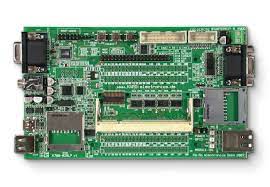Unlocking the Potential of Open Source Continuous Integration
The Power of Open Source Continuous Integration
Continuous Integration (CI) is a software development practice that involves frequently integrating code changes into a shared repository. When combined with open source principles, CI becomes a powerful tool for enhancing collaboration, improving code quality, and accelerating development cycles.
Benefits of Open Source CI:
- Collaboration: Open source CI platforms enable developers to work together seamlessly, regardless of their geographical location or time zone. This fosters a sense of community and encourages knowledge sharing.
- Quality Assurance: By automating the process of building, testing, and deploying code changes, open source CI tools help identify bugs and issues early in the development cycle. This leads to higher-quality software releases.
- Speed and Efficiency: With continuous integration, developers can quickly detect integration errors and resolve them before they escalate. This results in faster feedback loops and shorter release cycles.
- Transparency: Open source CI promotes transparency by allowing developers to view the entire build process, including tests and results. This visibility enhances accountability and trust within the development team.
- Cost-Effectiveness: Many open source CI tools are freely available, making them a cost-effective solution for teams looking to streamline their development workflows without breaking the bank.
Popular Open Source CI Tools:
Some widely used open source CI tools include:
- Jenkins: An extensible automation server that supports building, testing, and deploying software projects.
- Travis CI: A distributed build system for testing open source projects hosted on GitHub.
- CircleCI: A cloud-based continuous integration platform that automates the testing and deployment process.
- Github Actions: A workflow automation tool integrated with GitHub repositories for building, testing, and deploying code changes.
In conclusion, open source continuous integration plays a crucial role in modern software development by promoting collaboration, ensuring code quality, and accelerating delivery timelines. By leveraging the power of open source CI tools, developers can streamline their workflows, enhance productivity, and deliver high-quality software solutions to users worldwide.
Understanding Open Source CI: Jenkins, Buddy, and Key Concepts Explained
- Is Jenkins an open source CI CD tool?
- What is CI in open source?
- What is a CI tool?
- Is Buddy CI open source?
Is Jenkins an open source CI CD tool?
Yes, Jenkins is indeed an open source Continuous Integration (CI) and Continuous Delivery (CD) tool that is widely used in the software development industry. Known for its flexibility and extensibility, Jenkins allows developers to automate the build, test, and deployment processes of their software projects. With a vast array of plugins and integrations available, Jenkins empowers teams to customise their CI/CD pipelines to suit their specific needs and requirements. Its open source nature not only makes it accessible to a broad community of users but also encourages collaboration and innovation in the realm of software development.
What is CI in open source?
Continuous Integration (CI) in open source refers to the practice of regularly integrating code changes from multiple developers into a shared repository. This process involves automating the building, testing, and deployment of software to detect integration errors early and ensure that the codebase remains stable. By adopting CI practices in open source projects, teams can collaborate more effectively, identify and fix bugs quickly, and streamline the development process for delivering high-quality software efficiently.
What is a CI tool?
A CI tool, short for Continuous Integration tool, is a software application that automates the process of integrating code changes from multiple contributors into a shared repository. It plays a vital role in modern software development by facilitating the continuous integration practice, where developers can regularly merge their code changes to detect and address integration errors early on. CI tools streamline the build, test, and deployment processes, helping teams to collaborate more effectively, maintain code quality, and deliver software updates efficiently. By automating repetitive tasks and providing real-time feedback on code changes, CI tools enhance productivity and enable teams to deliver high-quality software solutions with confidence.
Is Buddy CI open source?
The frequently asked question regarding Buddy CI is whether it is open source. Buddy CI, unlike some other continuous integration tools, is not open source. It is a commercial product that offers a range of features for automating the build, test, and deployment processes in software development. While Buddy CI may not be open source, it provides a user-friendly platform with robust capabilities to streamline development workflows and improve productivity for teams of all sizes.




